

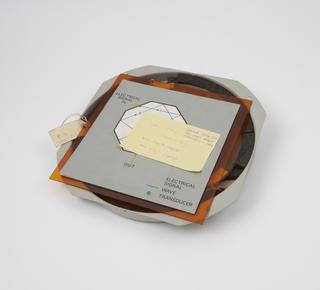
Quartz delay-line for static-target elimination in radar

Radar apparatus used by R.Watson Watt in 1935
1935

American airborne radar detector, type RT34/APS-13
1939-1945
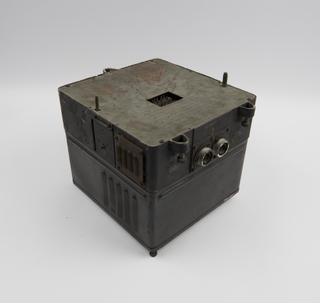
German aircraft u.h.f. receiver
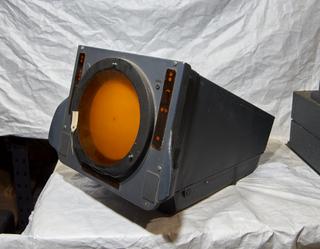
Decca HD516 radar equipment, display unit, type 4801C
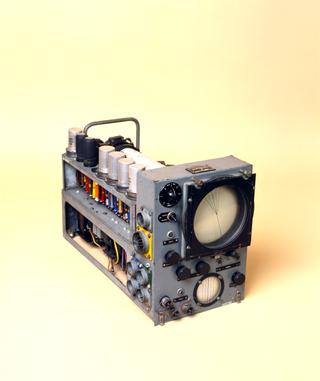
H2S Mk.IIc airborne ground-scanning radar installation, c.1943
1943
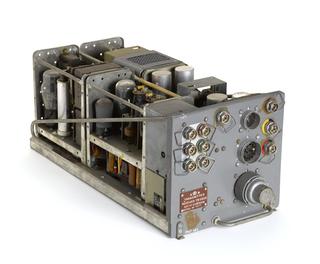
ASV (Air-to-Surface-Vessel radar) Mk XI for detection of vessels at sea
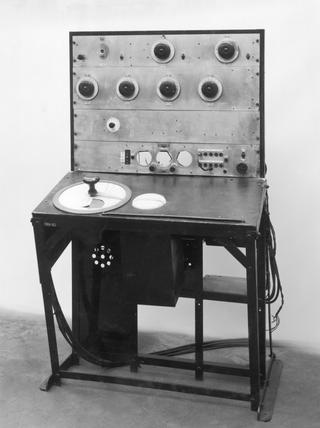
Very early mobile radar receiver type RM1, handmade at Bawdsey in 1937 or 1938
1937-1938
ASV (Air-to-Surface-Vessel radar) Mk.11.N., 1941-1945
1941-1945
Airborne Interception (AI) Mk.VIII. radar set (incomplete), 1941-1945
1941-1945
GL Mk.1 radar transmitter, 1939
1939
Murphy radar type D36
Synthetic Aperture Radar (SAR)
1989-1990
Sony Videocorder Type PV-12OUE modied for radar application
Original Liverpool Harbour Surveillance Radar Equipment
Portable traffic-light column and controller, for use with radar sensor.
Cathode-ray tube type HRP2/100/1.5Ash for Freya and Coast Watcher radars
1939-1945
Decca HD516 radar equipment, transceiver unit, type 4809
Two cathode-ray tubes type HR2/100/1.5A for Freya and Coast Watcher radar
1939-1945
Decca HD516 Radar Equipment
Noise generator type BN for testing ASV II receivers c. 1944
1944
Pulse transmitter from a Japanese airborne radar equipment
Decca HD516 radar equipment
Decca HD516 radar equipment, display unit, type 4801C
GL Mk.1 radar receiver, 1939
1939
Air Intercept (AI) radar
Lorenz standard 'blind approach' radar receivers R1124 and R1125 and accessories
Aerial assembly and pedestal from SCR 584 tracking radar, c.1944
1944
Pedestal Unit, Type 4840 for Decca HD516 Radar Equipment
Pedestal Unit, Type 4840 for Decca HD516 Radar Equipment
Piece of "Freya" German radar equipment
E160 airborne search radar
1954-1970
Verstaerkerkasten Vstk 65a amplifier, part of Wurzburg Fuse 65 radar
Type 268 marine radar wheelhouse indicator
1944-1952
Receiver Module from German "Lichtenstein" Airborne Radar, 1942
1942
Decca DASR-1 air surveillance radar
Solartron Video Map Generator for Air Traffic Control PPI Radar displays, c. 1960
1960-1970
Decca HD516 radar equipment, transceiver unit, type 4809
Scanner assembly from AGLT Airborne Gun-Laying Radar, 1944
1944